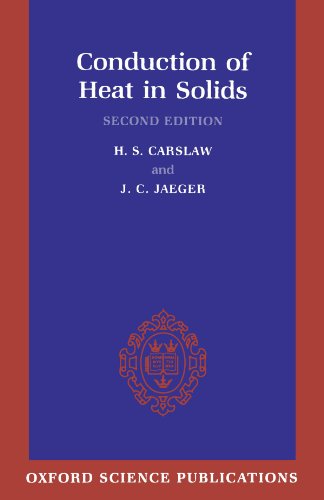Conduction of Heat in Solids book download
Par cartwright travis le jeudi, décembre 8 2016, 12:22 - Lien permanent
Conduction of Heat in Solids by H. S. Carslaw, J. C. Jaeger


Conduction of Heat in Solids H. S. Carslaw, J. C. Jaeger ebook
ISBN: 0198533683, 9780198533689
Format: djvu
Page: 517
Publisher: Oxford University Press, USA
Jaeger: Conduction of Heat in Solids (Oxford University Press, Oxford, 1959) p. Conduction; that is, heat being transferred from a heated solid to an unheated solid. Convection is heat transfer by the movement of liquids or gasses. There are three main forms of heat transfer which are commonly referred to within the process engineering industry: Conduction. Conduction is heat transfer within solids or between contacting solids. Conduction is the phenomenon of transfer of heat through one part of the body to another, from particle to particle in the direction of fall of temperature without any actual movement of the particles. Convection; that is, the transfer of heat from one place to another through the movement of fluids or gases. Conduction and Convection Conduction is most important in Solids. Thermal conductivity is a property derived in cases where conduction mode of heat transfer is studied and conduction of heat occurs through non flow motion of molecules example as solids where the molecules are not free to move. Houses lose a lot of heat through their windows even when they're shut. ΔT = temperature difference between two systems.